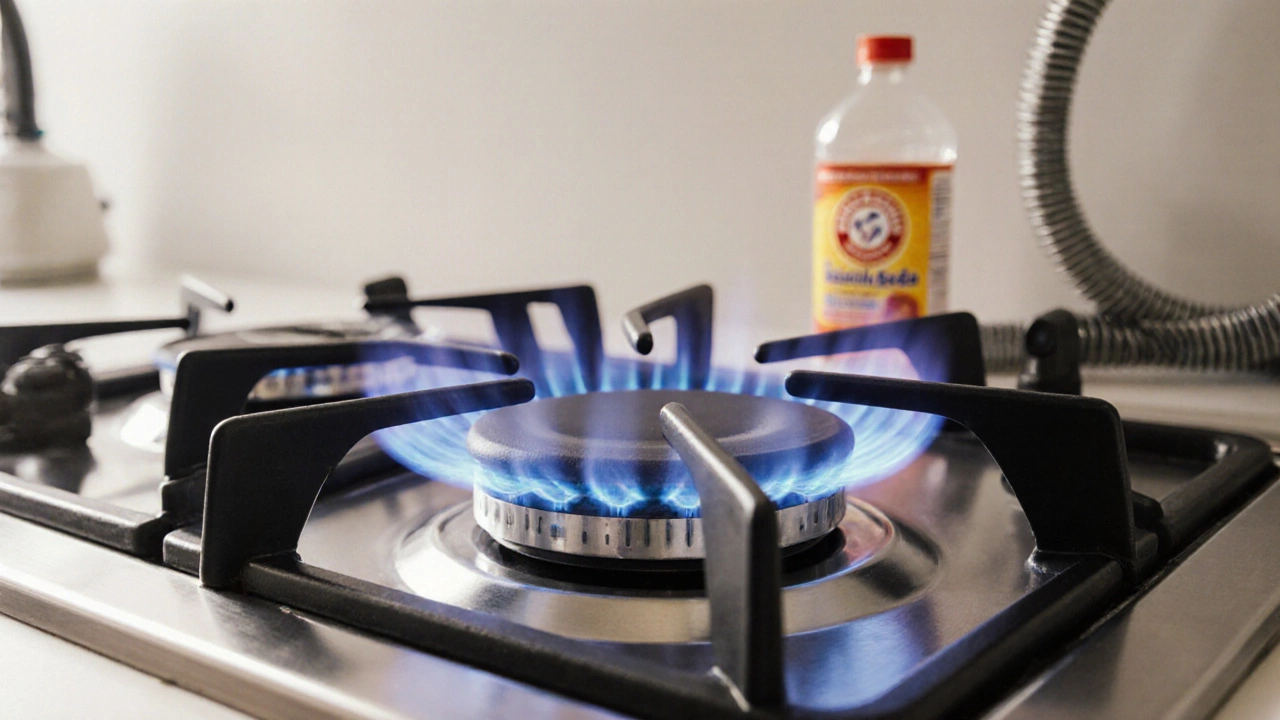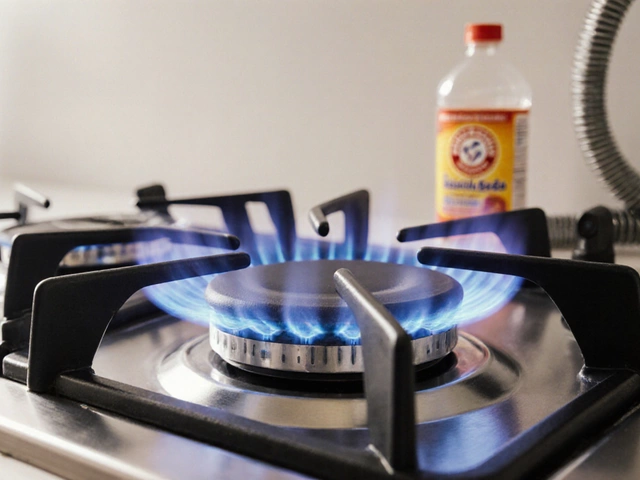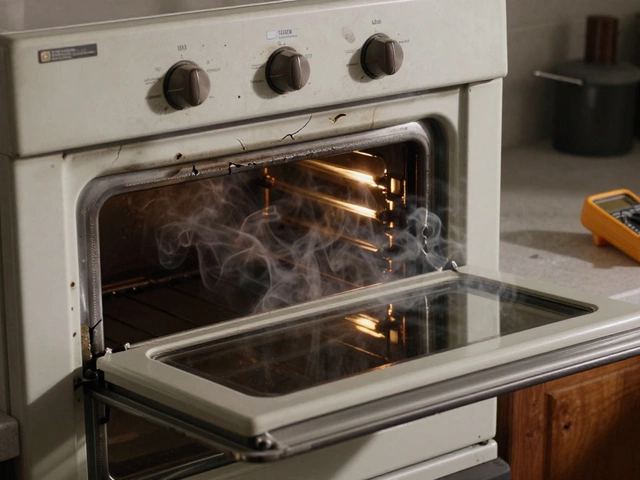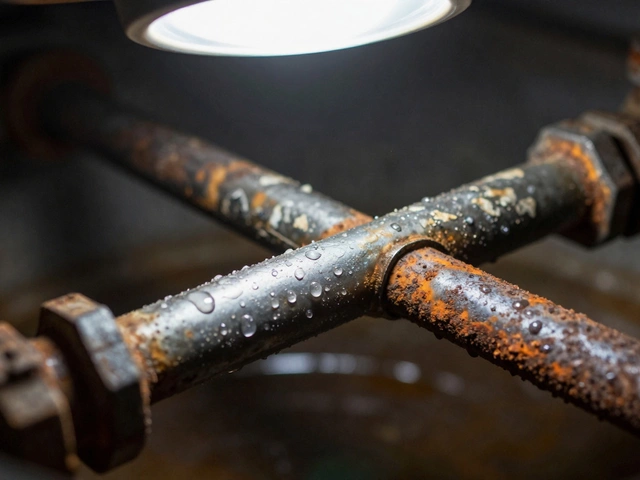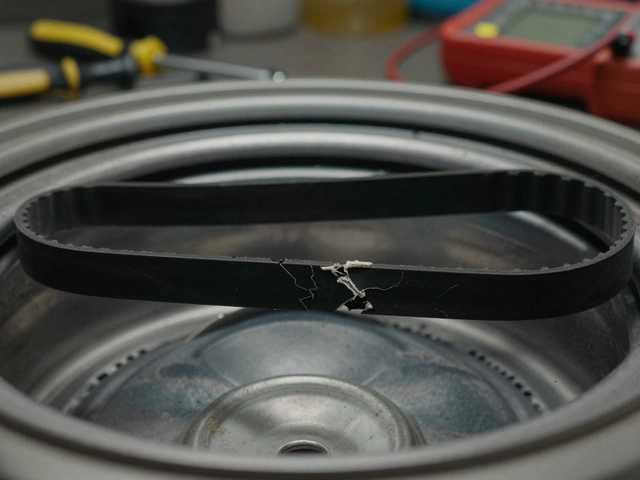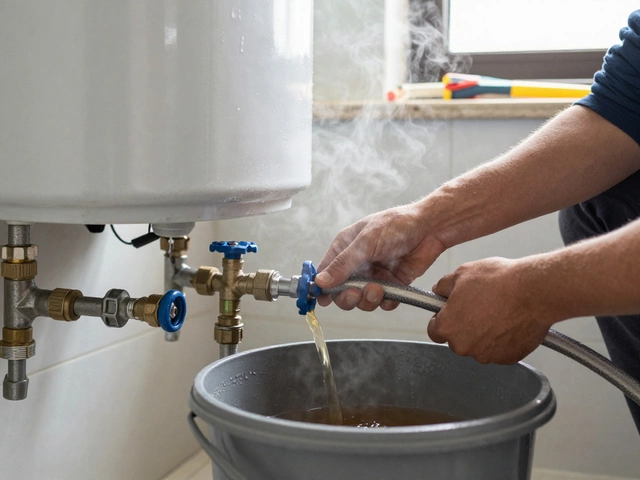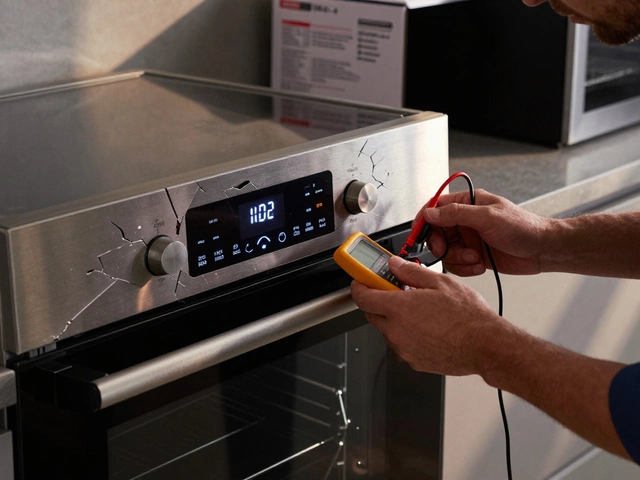Gas Appliance Lifespan Calculator
Find out your gas appliance's remaining lifespan
Based on usage, maintenance, water quality, and climate conditions
Most people don’t think about how long their gas appliance will last until it stops working. That’s when the real cost hits - not just the price of a new unit, but the mess, the inconvenience, and the safety risks of a broken gas line or pilot light that won’t stay lit. So how long should you expect your gas stove, water heater, or furnace to last? The answer isn’t a single number. It depends on what you’re using, how well you care for it, and where you live.
Gas Stoves and Cooktops: 15 to 20 Years
If you’ve got a gas stove that’s been in your kitchen since the 2000s, it’s probably still cooking fine. Most gas stoves last between 15 and 20 years. The burners, valves, and ignition systems are built tough. But here’s the catch: those old knobs and pilot lights don’t last forever. If your stove takes three tries to light, or one burner flickers on and off, it’s not just annoying - it’s a sign of worn-out parts. In Wellington, where humidity and salt air creep into homes, corrosion on gas valves and burner caps happens faster than inland. A simple cleaning every six months can add years. But if you’re replacing a burner assembly more than once, it’s time to consider a new unit. Modern gas stoves use electronic ignition, which cuts down on gas waste and wear.
Gas Water Heaters: 8 to 12 Years
This is the gas appliance most likely to surprise you with a sudden failure. A gas water heater typically lasts 8 to 12 years. In hard water areas - and parts of New Zealand have very hard water - mineral buildup inside the tank eats away at the lining. That’s why you hear rumbling noises or get rusty water. The anode rod, which protects the tank from rust, should be checked every two years. If it’s more than half eaten up, replace it. Most homeowners skip this. By year 10, the tank’s life expectancy drops sharply. If your water heater is over 10 years old and you’re getting less hot water, or you see puddles under it, don’t wait for a full leak. Start shopping. New models have better insulation, smart thermostats, and longer warranties.
Gas Furnaces and Heaters: 15 to 20 Years
A well-maintained gas furnace can run for two decades. But in New Zealand’s damp climate, condensation builds up in the heat exchanger. Cracks form over time. That’s dangerous - it can let carbon monoxide into your home. If your furnace is older than 15 years and your utility bills are creeping up, or you smell gas when it kicks on, get it inspected. A professional can test for cracks with a smoke test or camera. Replacing the blower motor or ignition control board might extend its life, but if the heat exchanger is failing, repair isn’t worth it. New high-efficiency furnaces (90%+ AFUE) use less gas and deliver more consistent heat. The upfront cost is higher, but you’ll save on bills every winter.
Gas Dryers: 10 to 13 Years
Gas dryers don’t get as much attention as washers, but they’re just as important. Most last 10 to 13 years. The biggest killer? Lint buildup. A clogged vent doesn’t just make drying slower - it overheats the drum and burns out the heating element. Clean the lint trap after every load. Every six months, pull the dryer out and vacuum the vent hose. If your clothes take two cycles to dry, or the dryer feels hot on the outside, the vent is blocked. Some models have sensors that shut off when the lint trap is full. Older ones don’t. If your dryer is over 10 years old and you’re constantly fixing parts, it’s cheaper to replace it than keep patching it.
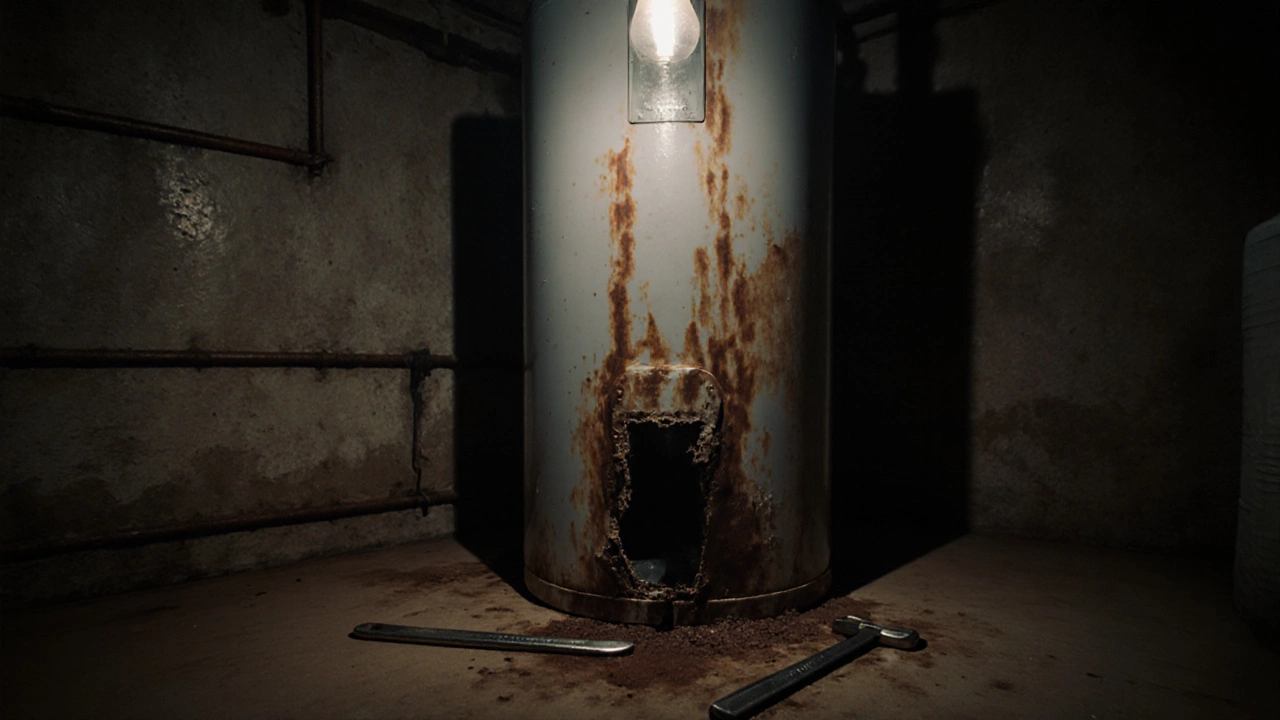
What Drives Gas Appliance Lifespan?
It’s not just age. Four things decide how long your gas appliance lives:
- Usage - A family of five using a stove 4-5 times a day wears it out faster than a single person using it once.
- Maintenance - Cleaning burners, checking vents, replacing filters - these simple tasks add 3-5 years to most appliances.
- Water quality - Hard water shortens water heater life by up to 40%. If your tap leaves white residue, install a water softener or flush the tank yearly.
- Climate - Coastal areas like Wellington speed up corrosion. Salt air eats metal. Appliances in garages or basements face more humidity and temperature swings.
One homeowner in Porirua had a gas water heater that lasted 18 years. Why? He flushed it every six months, replaced the anode rod at year 5, and kept the area dry. Another in Tauranga replaced their stove after 10 years because they never cleaned the burners. The grease clogged the gas ports. The flame turned yellow - a sign of incomplete combustion. That’s not just inefficient. It’s dangerous.
Signs It’s Time to Replace Your Gas Appliance
You don’t need to wait for it to break. Watch for these red flags:
- Yellow or flickering flame (should be blue with a small yellow tip)
- Unusual smells - gas, burning plastic, or rotten eggs
- Increased energy bills without changed usage
- Strange noises - banging, whistling, or loud clicks
- Age over 10 years with frequent repairs
- Condensation or rust around the base or vents
If you see more than one of these, don’t delay. A gas leak or carbon monoxide buildup can happen without warning. Install a carbon monoxide detector near any gas appliance. It’s not optional. It’s life-saving.
Cost to Replace vs. Repair: When to Cut Your Losses
Here’s a simple rule: if the repair cost is more than half the price of a new unit, walk away. A gas stove repair might cost $200-$400. A new one? $800-$1,500. So if your stove is 12 years old and needs a new ignition module, it’s worth fixing. But if it’s 18 years old and needs a new valve? Replace it.
Gas water heaters are trickier. Replacing the anode rod costs $150. Replacing the whole tank? $1,800-$3,000. But if your tank is 11 years old and you’ve already replaced the heating element twice, the corrosion inside is permanent. You’re just delaying the inevitable.
Think of it like a car. You wouldn’t spend $3,000 to fix a 20-year-old engine when a new one costs $5,000. Same logic applies.
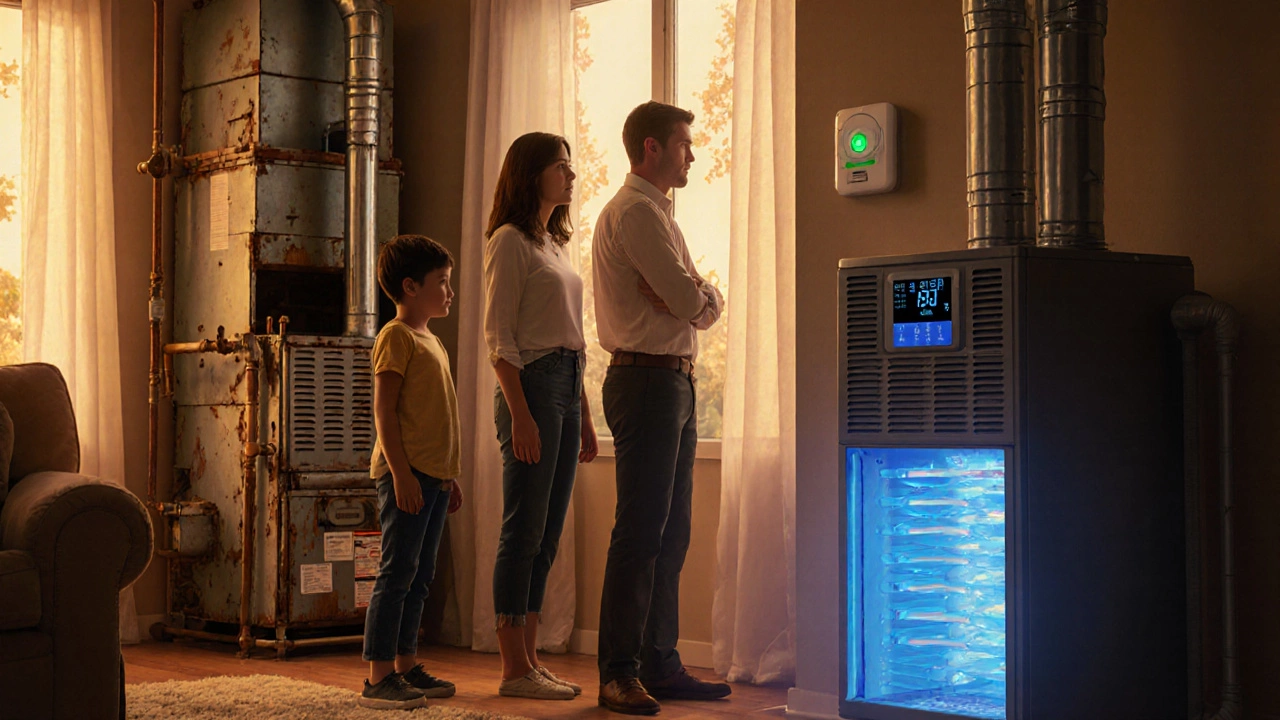
How to Extend the Life of Your Gas Appliances
It’s not magic. Just consistent care.
- Wipe down stove burners and drip pans monthly. Grease buildup blocks gas flow.
- Flush your water heater once a year. Drain a bucket through the valve to remove sediment.
- Check dryer vents twice a year. Use a vacuum or vent brush to clear lint.
- Keep the area around appliances dry and ventilated. Moisture kills metal parts.
- Get a professional inspection every two years. They’ll spot small cracks, gas leaks, or failing parts before they become emergencies.
These steps cost less than $100 a year. They can add 5-8 years to your appliances. That’s like getting a free upgrade.
What to Look for When Replacing a Gas Appliance
When it’s time to buy new, don’t just pick the cheapest. Look for:
- Energy Star rating - Saves 10-20% on gas bills.
- Electronic ignition - No pilot light means no wasted gas.
- Stainless steel components - Better resistance to rust and corrosion.
- Long warranty - 10-year parts warranty is standard for quality units.
- Smart features - Some water heaters let you monitor usage and detect leaks via app.
Brands like Bosch, Rinnai, and Navien are common in New Zealand. They’re built for local conditions - including humidity and water hardness. Avoid no-name imports. They might look cheap, but their parts wear out fast, and service support is nonexistent.
Frequently Asked Questions
Can a gas appliance last 25 years?
It’s rare, but possible. Gas furnaces and stoves can reach 25 years with perfect maintenance - annual professional servicing, clean vents, no water damage, and no overuse. But even then, efficiency drops. A 25-year-old gas heater might use 30% more fuel than a new one. Safety systems are outdated. Most experts recommend replacing gas appliances after 20 years, even if they still work.
Is it safe to keep using an old gas appliance?
It depends. If the appliance is clean, has a steady blue flame, no gas smell, and no rust or leaks, it’s likely safe for now. But older units lack modern safety features like automatic shutoffs, flame failure devices, or carbon monoxide sensors. If you’re unsure, get a certified gas fitter to inspect it. Don’t risk it - gas leaks and carbon monoxide poisoning don’t give warnings.
Do gas appliances need annual servicing?
Yes, especially in New Zealand. The Building Code recommends gas appliance servicing every two years. But if you live near the coast, use your appliance heavily, or have hard water, annual checks are smarter. A technician will check gas pressure, clean burners, test for leaks, and inspect flues. It costs $100-$150 - far less than a repair or replacement after a failure.
What’s the most common reason gas appliances fail?
Corrosion and sediment buildup. Water heaters rust from inside due to hard water. Stove valves corrode from humidity. Dryer vents clog with lint and trap moisture. Most failures aren’t from broken parts - they’re from neglect. Regular cleaning and inspections prevent 80% of breakdowns.
Should I switch to electric instead?
Electric appliances are becoming more common, especially with rising gas prices and government push for electrification. But gas still heats faster, works during power outages, and is cheaper to run for cooking and water heating in most cases. Unless you’re renovating or installing solar, sticking with gas makes sense - just make sure your current unit is safe and well-maintained.
Next Steps
If your gas appliance is over 10 years old, write down its make, model, and age. Check your maintenance records. Do you know when the last service was? If not, schedule one now. If you’re unsure whether to repair or replace, take a photo of the unit and ask a licensed gas fitter for a free quote. Most offer it. Don’t guess. Get facts. Your safety and wallet will thank you.

